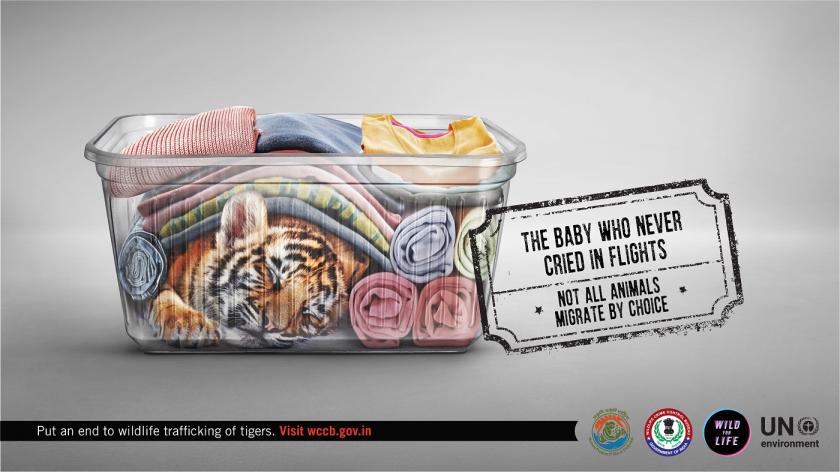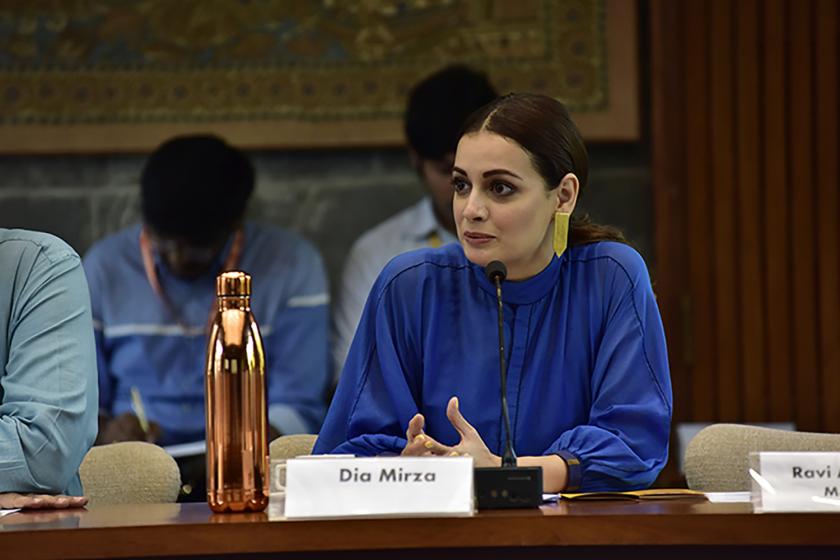Spotlight on India’s soaring wildlife crime
This article originally appeared at https://www.unenvironment.org/news-and-stories/story/spotlight-indias-soaring-wildlife-crime.In February this year, customs officials at Chennai International Airport in southern India heard unusual squeaks coming from the luggage of a man who had arrived from Bangkok. Inside his bag was a tiny leopard cub in a basket.
The customs department in Chennai has been seizing star tortoises, sea cucumbers and pangolin scales being smuggled out of the country for years. Officials now say exotic species being smuggled in are on the rise. But where the exotic wildlife being smuggled into India is going is anybody’s guess.
The illegal trade in wildlife is driving species all over the globe to the brink of extinction. In India, the trade is expanding rapidly, driven by demand for rare species—headed for the pet market—as well as for species believed to have medicinal properties. The main consumer markets are China and South East Asia, but wildlife—alive or as body parts—is also smuggled to the Gulf, Europe and Northern America. Beyond India, the main transit countries are Nepal, Bangladesh, Bhutan, Sri Lanka and Myanmar.
Indian wildlife species and products commonly smuggled out of the country are tiger and leopard skins, their bones and other body parts, rhino horns, ivory, turtles and tortoises, sea horses, snake venom, mongoose hair, snake skins, tokay gecko, sea cucumber, chiru fleece, musk pods, bear bile, medicinal plants, red sanders timber and caged birds such as parakeets, mynas, munias. Most people probably don’t even realize that this wealth of species even exists in India. But they are perishing fast, with a population of only about 25 of the chiru remaining.
The most trafficked species are pangolins, seahorses and tortoises:
In 2018, TRAFFIC India released a study which revealed that at least 5,772 pangolins were captured in India from 2009 to 2017 for illegal trade.
The Patagonian seahorse (hippocampus patagonicus) is one of the three sea horse species which is trafficked for its use in medicine.
The Indian star tortoise is now the most trafficked tortoise worldwide as it is in high demand as a pet.The tokay gecko has come into the picture recently after a number of seizures, mainly in northeast India. The trade is believed to be fueled by unfounded claims it can be used as a cure for AIDS. A crackdown by agencies in several Indian states has led to the arrest of more than 300 gecko traffickers in the past year. More than 1,000 geckos have been confiscated in India during this period and released back into the wild.
“A lack of knowledge, anonymous e-commerce, greed and low risk, high reward opportunities are coming together in a perfect storm to fuel wildlife crime globally, and India is a major hotspot,” says UN Environment wildlife campaign coordinator Lisa Rolls.
While India has a strong legal and policy framework to regulate and restrict wildlife trade, the draw of quick cash is luring unemployed youth to act as couriers.

Roving airport campaign kicks off
India is only 2.4 per cent of world's land area, but contributes about 8 per cent of known global wildlife, including over 45,000 species of plants and 91,000 species of animals.
Despite having a huge population of over 1.3 billion, the country boasts 662 protected areas, five of them designated as World Heritage Sites by the United Nations Educational, Scientific and Cultural Organization (UNESCO). These protections are underpinned by Indian myths, folklore, religion, arts, and culture which hold diverse life forms in high regard. The Eastern Himalayas, Western Ghats, Indo-Myanmar landscape and Andaman & Nicobar Islands are biodiversity hotspots.
On 21 May 2019, India’s Wildlife Crime Control Bureau, in collaboration with UN Environment Goodwill Ambassador for India Dia Mirza, the Wild for Life Campaign and branding experts Ogilvy, officially launched a roving airport exhibition which highlights the environmental damage done by wildlife trafficking. The campaign, led by UN Environment’s India office, aims to garner public support for the protection and conservation of wildlife in the country, prevent smuggling and reduce the demand for illegal wildlife products.
“A huge global demand for our flora and fauna is a major cause for illegal wildlife trade by ruthless cross-border smugglers,” says Tilotama Varma, Additional Director, Wildlife Crime Control Bureau of India. “The Wildlife Crime Control Bureau stands committed to fight this organized crime, but it is crucial to work together across various government and non-government organizations, private sector and civil society to save wildlife.”
In the first phase of the campaign, tiger, pangolin, star tortoise and tokay gecko have been taken as flagship species as they are highly endangered.
“I am so pleased to expand my role as a Wild for Life snow leopard champion to lesser known species that are also critically important in India. The responsibility lies with each of us to know more and act. Don’t turn a blind eye if you see, or hear, something suspicious at an airport and be informed about what you are buying. If it’s exotic and rare, there is a good chance it is also illegal,” commented Dia Mirza.

Recent seizures at Chennai Airport
25 March 2019: African horn pit viper seized along with 2 rhinoceros iguanas, 3 rock iguanas, 22 Egyptian tortoises, 4 blue-tongued skinks and 3 green tree frogs
13 March 2019: 18kg of peacock feathers meant to be smuggled to Malaysia and Singapore
2 February 2019: Leopard cub seized from a man who arrived from Bangkok
21 January 2019: 14kg of shark fins seized from a man travelling to Singapore
20 December 2018: 4,800 red-eared slider turtles seized from two passengers who arrived from Bangkok
12 October 2018: 2,300 red-eared slider turtles seized from a passenger who arrived from Bangkok
6 April 2018: 65 star tortoises seized from a passenger bound for Bangkok
For further information please contact Lisa Rolls, Head of Wildlife Communication.